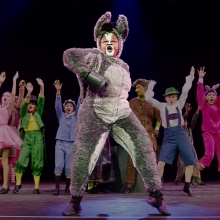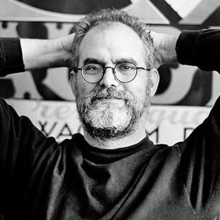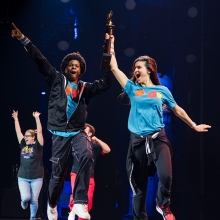MTI's account management portal, MyMTI, will be offline for planned system maintenance beginning 5:30 PM on Thursday April 24 to 9:00 AM on Friday April 25 (Eastern Time).
Show History
History
Inspiration
Peter Pan is a musical adaptation of J.M. Barrie's play, Peter Pan, or The Boy Who Wouldn't Grow Up. The immense success of Barrie's play prompted various amounts of adaptation on the story, including other plays. Edwin Lester, the founder and director of the Los Angeles Civic Light Opera at the time, had obtained the American rights to the work and planned to produce an adaptation that added music for Mary Martin.
Directed by Jerome Robbins and with original music by Mark "Moose" Charlap and lyrics by Carolyn Leigh, the adaptation had a pre-Broadway tour across the West Coast that was not terribly well-received. As a result, Robbins hired lyricists, Betty Comden and Adolph Green, along with composer, Jule Styne, to write several new songs, effectively turning the show into a full-scale musical. The creators decided to change from Barrie's original ending, where Peter simply let Wendy and the other children return home. Instead, they pulled from a scene that Barrie had written later, where Peter visits the Darling house several years later and discovers Wendy has a daughter.
Productions
Peter Pan opened at the Winter Garden Theatre on Broadway on October 20, 1954. Starring Mary Martin and Cyril Ritchard, it only planned for a limited run, having previously made a deal with NBC to be broadcast on television while still on tryouts in Los Angeles. The production closed on February 26, 1955, and was followed by NBC's "Producers' Showcase" program on March 7, 1955. The initial broadcast of the musical attracted an audience of 65 million viewers. This popularity prompted two more televised broadcasts on January 9, 1956, and December 8, 1960. The latter version was rebroadcast in 1963, 1966 and 1973.
After the immense popularity of the television broadcast, the musical found a new home on Broadway through several revivals. The first came in 1979 at the Lunt-Fontanne Theatre. Another production came in 1990, starring Cathy Rigby; it initially started at the Lunt-Fontanne, like the previous revival, but returned ten months after closing for an additional 48 performances at the Minskoff Theatre. A similar series of events happened with yet another revival in 1998 at the Marquis Theatre, followed by a return engagement in 1999 at the George Gershwin Theatre.
Since the 1998/1999 Broadway revivals, Peter Pan went on to play numerous national tours, with Cathy Rigby continuing to perform in the title role, as well as in a 2011 production at the Theater at Madison Square Garden.
Cultural Influence
- Peter Pan was one of the first musicals to be broadcast in its entirety on television. The immense success of the broadcast has inspired a myriad of television movie stagings of Broadway musicals.
- The 1955 NBC broadcast of Peter Pan was then the highest rated single television program in the history of television.
- The musical was among the first to use advanced flying techniques on stage. The success of the flying helped pave the way for many future Broadway shows to implement advanced technologies in their performances.
Trivia
- In addition to the Tony Awards it won in 1955, Peter Pan has received Tony nominations for Best Revival and Best Actress in a Musical for its 1979, 1990 and 1998 revivals.
- In an homage to the original play (along with the pantomime tradition from which it originates), the title character of Peter Pan is usually performed by a woman. Two notable male exceptions include Meyne Wyatt with Australia's Belvoir company and Jack Noseworthy as an understudy on Jerome Robbins' Broadway.




